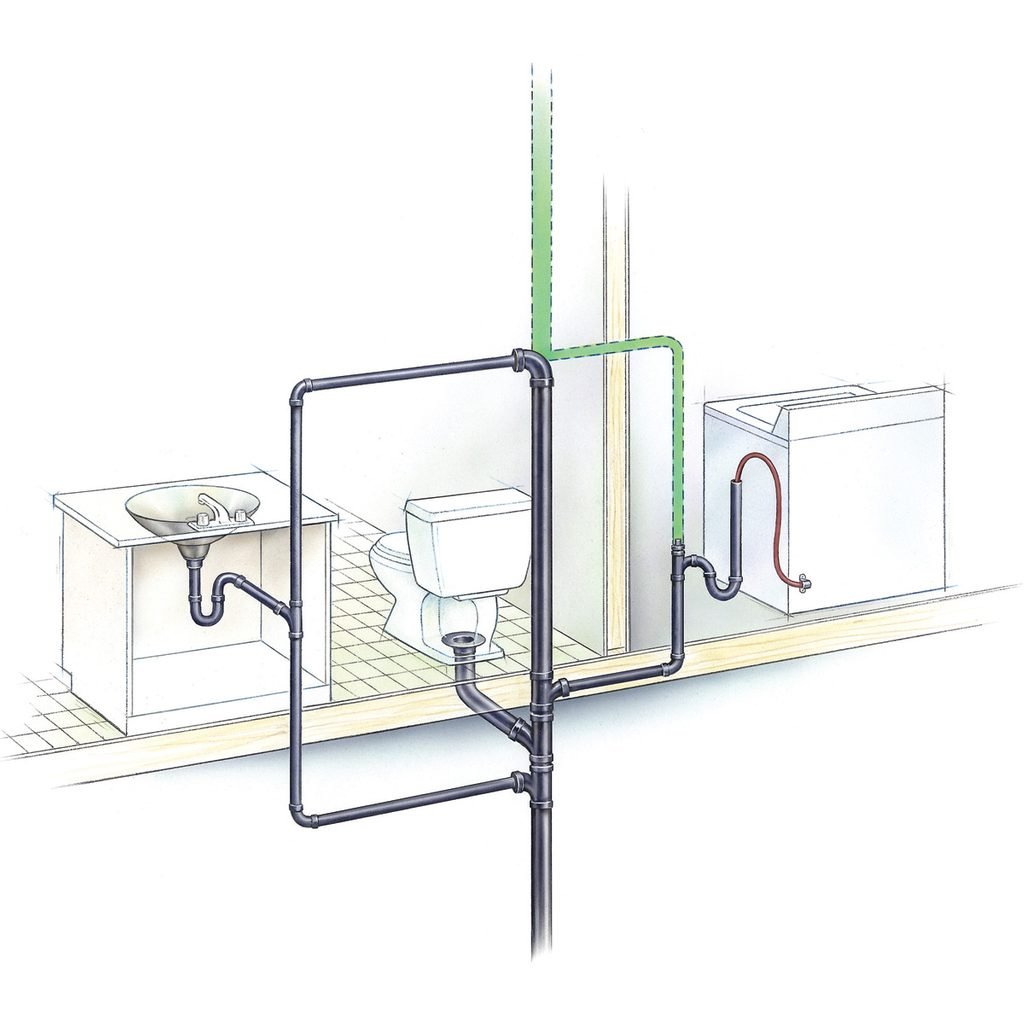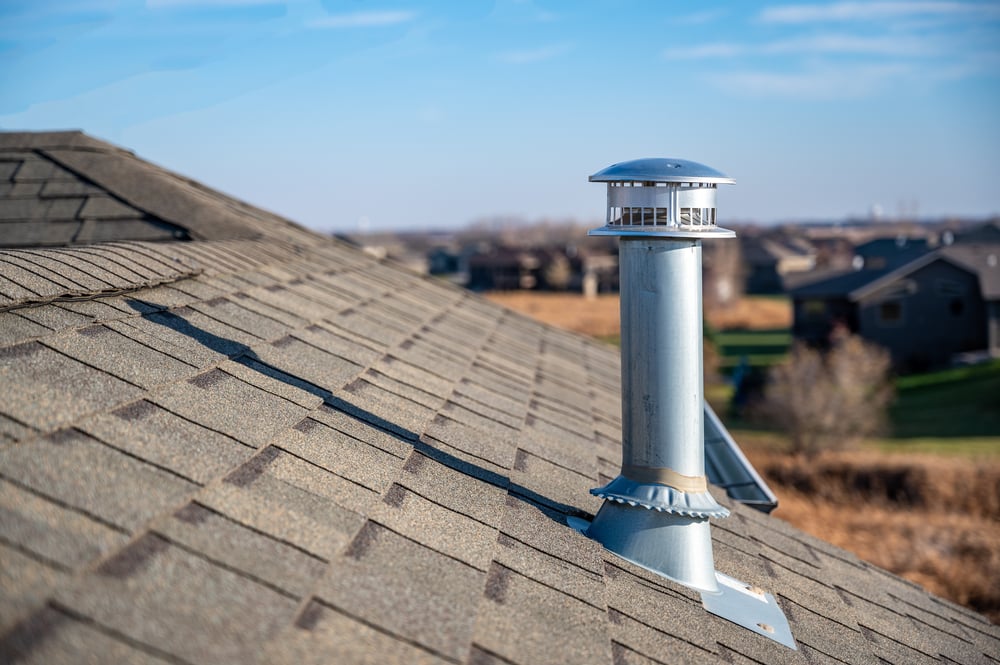Grasping The Significance of Adequate Ventilation in Plumbing Systems
Grasping The Significance of Adequate Ventilation in Plumbing Systems
Blog Article
The author is making a few good pointers relating to What Is a Plumbing Vent and Why Is It Important overall in this article underneath.

Correct ventilation in plumbing systems is usually neglected, yet it is critical for preserving the functionality and safety of your home's plumbing. Ventilation helps manage air pressure, avoid the buildup of unsafe gases, and make sure the reliable removal of waste. In this overview, we will certainly explore the importance of correct pipes ventilation, how it functions, and the benefits it offers your plumbing system.
Comprehending Ventilation in Plumbing
Ventilation in plumbing refers to the network of pipelines that permit air to move via the water drainage system. These vents offer several functions, including controling atmospheric pressure within the pipes, preventing sewage system gases from going into the home, and helping in the smooth flow of wastewater.
How Ventilation Functions in Pipes Solutions
Air Pressure Law
Appropriate ventilation keeps balanced atmospheric pressure within the plumbing system. When water moves via pipes, it displaces air. Without ample ventilation, this variation can develop unfavorable pressure, causing slow down drains pipes or siphoning of water from traps, which can create unpleasant smells to leak right into the home.
Preventing Drain Gas Build-up
Among one of the most important features of pipes vents is to prevent drain gases, such as methane and hydrogen sulfide, from gathering within the home. These gases can present serious health and wellness threats and are very flammable. Vent pipes allow these gases to get away safely outside.
Assisting in Waste Removal
Ventilation assists in the effective elimination of wastewater by stopping airlocks in the drain system. When air can stream freely via the vents, it allows water and waste to stream efficiently via the pipes, lowering the risk of blockages and back-ups.
Types of Plumbing Vents
Main Heap Vent
The major pile air vent, also referred to as the vent stack, is the key vent in a pipes system. It expands from the primary drainpipe line up through the roof, permitting gases to get away and fresh air to enter the system.
Branch Vent
Branch vents attach to the main pile air vent and serve specific components, such as sinks, toilets, and showers. These vents make sure that each fixture has appropriate air flow to operate properly.
Air Admittance Valve (AAV).
An Air Admittance Valve (AAV) is a one-way shutoff that permits air to enter the pipes system without the demand for a typical vent pipeline extending via the roof covering. AAVs are typically utilized in improvements or locations where installing a conventional vent is unwise.
Signs of Poor Air Flow in Pipes.
Slow Draining Fixtures.
If your sinks, bathtubs, or commodes are draining gradually, maybe a sign of inadequate air flow. Poor air circulation can create a vacuum effect, making it hard for water to drain appropriately.
Gurgling Sounds.
Gurgling audios originating from drains are often a result of air being sucked via water traps as a result of negative stress in the pipelines. This is a clear indicator of inadequate ventilation.
Unpleasant Odors.
Drain smells inside your home are a red flag that your plumbing system is not appropriately aerated. This can mean that sewer gases are not being sufficiently aired vent outside, bring about possibly unsafe problems.
Typical Air Flow Errors.
Inadequate Vent Sizing.
Making use of undersized air vent pipelines can cause bad air circulation and pressure discrepancies in the system. It's important to utilize vents that satisfy the certain demands of your plumbing system.
Improper Vent Positioning.
Putting vents too far from the fixtures they offer can lower their performance. Appropriate placement guarantees that air can stream freely and efficiently with the system.
Ignoring Code Needs.
Building codes provide specific guidelines for pipes air flow. Overlooking these codes can lead to a system that stops working to function correctly and may result in costly fixings or carcinogen.
Advantages of Appropriate Air Flow.
Boosted System Efficiency.
Appropriately aerated plumbing systems run more effectively, with less clogs, faster draining, and much less strain on the pipes. This effectiveness extends the life expectancy of the plumbing system.
Improved Air Top Quality.
By avoiding sewer gases from entering your home, appropriate air flow adds to far better interior air high quality, making your living environment healthier and a lot more comfy.
Protecting Against Water Damages.
Ample air flow aids prevent water from being siphoned out of traps, which can lead to sewage system gases going into the home and triggering water damages with time.
Steps to Ensure Correct Ventilation.
Consulting Pipes Codes.
Always speak with regional pipes codes when creating or modifying your plumbing system. These codes provide the necessary guidelines for appropriate venting and ensure your system fulfills safety and security requirements.
Normal Evaluation and Upkeep.
Routine evaluations can aid identify potential ventilation problems prior to they become significant problems. Maintenance jobs, such as cleansing vent pipes and checking for clogs, are important for maintaining the system in good working order.
Professional Installment.
For new installments or significant modifications, it's important to employ a specialist plumbing technician. They have the know-how to ensure the air flow system is properly created and mounted according to code.
Conclusion.
Appropriate ventilation is an essential part of any type of plumbing system, guaranteeing that it operates successfully and securely. By understanding the importance of air flow, identifying the indicators of inadequate air flow, and taking steps to keep your system, you can stop costly concerns and secure your home's air top quality.
4 Things You Should Know About Your Plumbing Vents
What Plumbing Vents Are
Also called a vent stack, a plumbing vent is a vertical pipe attached to your drain line that runs through your roof. The plumbing vent pipe, or plumbing air vent, removes gas and odors from your plumbing system and allows fresh air to enter the pipes, helping the water to flow out of the drain pipes.
What Plumbing Vents Do
Plumbing vents have two basic functions. One of which is to allow unpleasant smelling wastewater and sewer gasses to escape your plumbing system instead of entering your home. Plumbing vent pipes are typically located on roofs, away from windows, to ensure the fumes exit the home completely.
The other function of the plumbing vent is to move fresh air into your plumbing system. This helps move water through every plumbing fixture in your house, like toilets and sink drains. Think of the way in which you need to let a little air into the bottle as you pour soda in order to make the drink flow smoothly.
Different Types of Plumbing Vents
True vent: This is the most common vent option. In simplest terms, a true vent is a vertical pipe attached to your drain line that exits through the roof. They often function as the main vent that other fixtures can connect to. Re-vent pipe or auxiliary vent: Attached to the drain line near specific plumbing fixtures, re-vent pipes run up and over to connect to the main vent. Common vent: Two plumbing fixtures installed on opposite sides of a wall are typically tied into the vent stack using something known as a sanitary cross. Wet vent: This venting option operates as a drain pipe and a vent at the same time. Wet vent drainage systems drain water from one fixture while venting the air from another. Although they’ve been used for over 100 years, wet vent systems have only recently been added to the plumbing code in many areas. If you’re planning on installing one in a bathroom remodel, make sure you check your local code prior to construction. Loop vent: For free-standing fixtures like kitchen island sinks, loop vents are ideal. These vent pipes run under the floor, rise from the P-trap, and create a loop inside the cabinet sink. Air admittance valve: An AAV is a one-way mechanical valve typically installed at the site of the plumbing fixture. AAVs allow venting to occur without having to tie into a larger venting system. They’re ideal for venting fixtures where you aren’t able to easily connect to an existing vent system. Common Plumbing Vent Issues
Although vent pipes typically don’t have water flowing through them, they’re still subject to many typical plumbing issues. For example, clogs are one of the most common problems associated with sewer vent pipes. If your vent pipe gets clogged, all of your plumbing fixtures tied into the vent stack will be affected.
A sink with a slow drain that bubbles and gurgles or a strong sewage smell around your toilet are both indicators that your toilet vent pipe is clogged. Because most vent pipes exit through the roof, old leaves, twigs or even a bird’s nest could be clogging the pipe.
Clogs in your vent pipe system cause a buildup of negative pressure, meaning that water won’t be able to flow out of your home very well. It’s similar to putting your finger over the opening of a straw to trap water inside. When you remove your finger, the water is able to flow out of the straw.
If you suspect you have any blockage in your vent, make sure you have a professional come examine the situation. Left unchecked, a blocked air vent can lead to other costly repairs, like leaks and sediment buildup.
Under Pressure
Pipe vents are essential aspects of a home’s plumbing system. Owning a home means learning about all sorts of things you never put much thought into before. But by understanding as much as you can about the important systems of your home, you can keep those budgets intact and those anxiety levels low.
https://www.homeserve.com/en-us/blog/home-improvement/plumbing-vents/

I was brought to that report on Essential Plumbing Vent Pipes: Understanding Their Role through a friend on our other blog. Enjoyed reading our posting? Please share it. Let other people locate it. Thanks a lot for your time invested reading it.
Schedule Now! Report this page